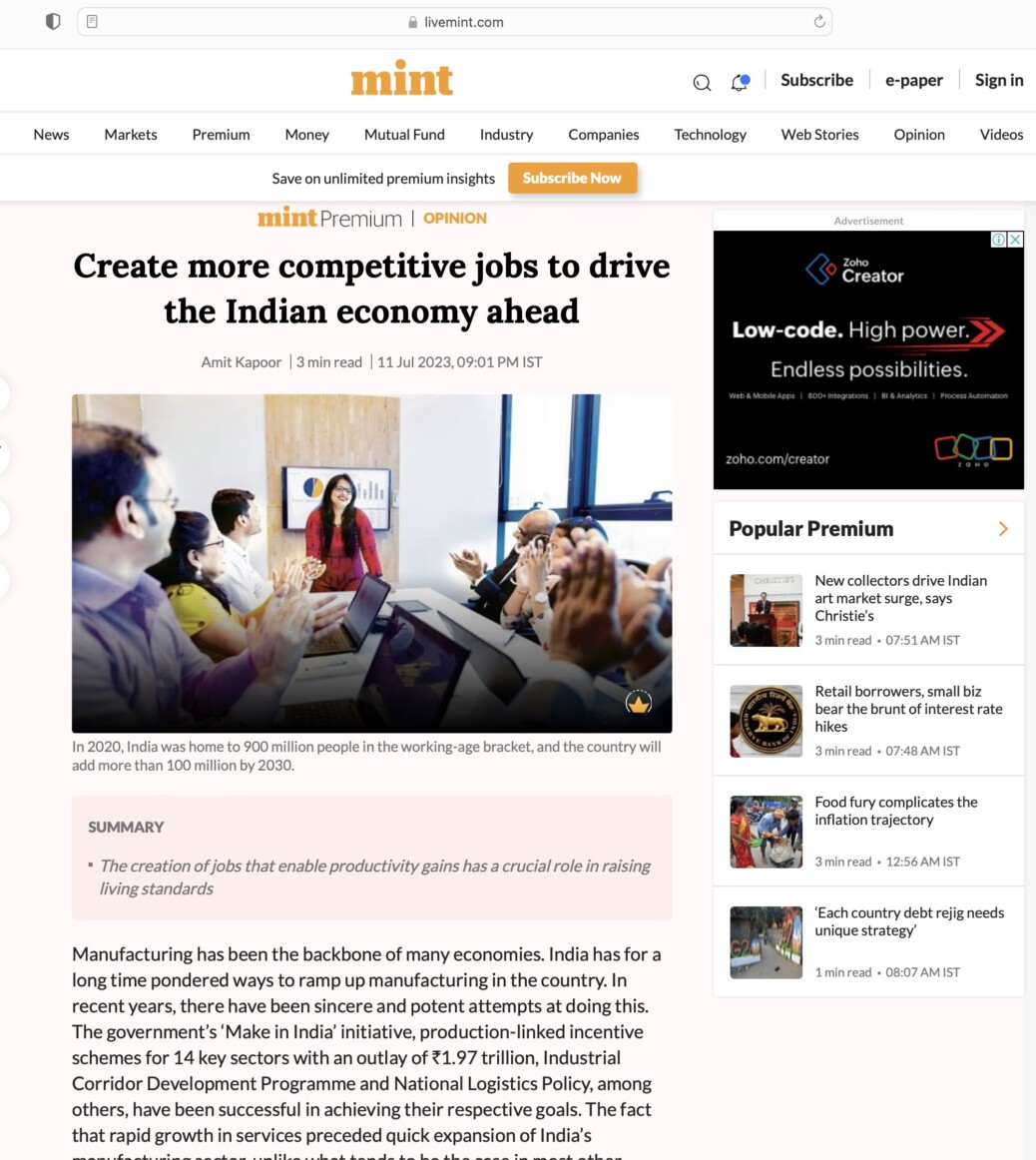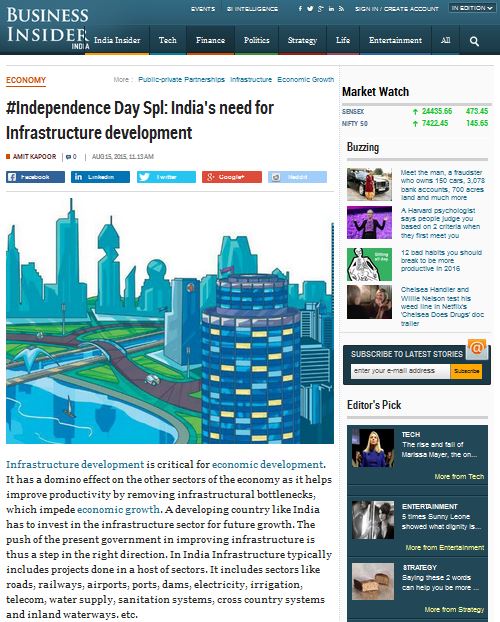Manufacturing has been the backbone of many economies. India has, for the longest time, pondered over ways to ramp up manufacturing in the country. In recent years, there have been sincere and potent attempts at doing the same. The Make in India initiative, Production Linked Incentive Schemes for 14 key sectors with an outlay of Rs. 1.97 lakh crore, the Industrial Corridor Development Programme, National Logistics Policy, among others, have panned out successfully. The fact that growth in Services preceded that in Manufacturing in India, unlike the case in several other countries, is an oft-repeated sentiment. Given this scenario, the rigorous push in manufacturing is timely and desired. Traditionally, the view held has considered manufacturing sector to have immense job creation potential to absorb surplus labour otherwise employed in agriculture. Its potential has also stemmed form its ability to absorb low-skilled labour for labour-intensive work. India has emphasized on manufacturing industries to create a growing pool of jobs. For the longest time, the country has undertaken significant work to get its manufacturing industries to create a growing bank of jobs. However, it is of essence to complement these efforts with a focus on creation of competitive jobs.
Competitive jobs are jobs that provide pathways to higher productivity and enable individuals to earn their own livelihoods to become self-reliant. Competitive jobs make individuals earn their wages in the marketplace, support the livelihood of employees, and provide opportunities for developing capabilities and productivity over time. The focus here on developing capabilities of workers and improving their productivity is key to unlocking long-term economic growth. Competitive jobs are those that do not allow for a stagnation in an individual’s capacity. Such jobs create an environment conducive to raising the individual’s output, capability, and value added. In simple terms, a competitive job provides room for the worker to enhance their skill-set and value. To quote Paul Krugman in this context, ‘The capacity of a country to improve its standard of living through time depends almost entirely on its capacity to increase output per worker’. A large chunk of employment in India comes from informal spaces of work. Informality and irregularity in employment restricts scope to build human capital and improve performance over time. It has a stifling effect on worker capacity with limited incentives to invest in assets that would drive productivity. The ILO’s World Employment and Social Outlook 2023 report considers productivity as “key to addressing today’s multiple crises”. India has unmatched potential to be a driver of higher productivity on a global scale.
In 2020, India was home to 900 million people in the working age bracket and will add more than 100 million by 2030. India’s working-age population is growing by roughly 10 million annually, and is expected to exceed China’s working-age population in total numbers. The discussion on our demographic dividend and the gains from tapping into it efficiently is gaining ground. On the other hand, a wave of digital revolution has trickled into every corner of the nation, transforming lives and livelihoods. Both the aforementioned trends together can be foundational for a more productive India. The widespread nature of digitization can be seen from the fact that the total telephone subscriber base in India stood at 117.8 crore in 2022 with 44.3 per cent of subscribers coming from rural India. In January 2023, around eight billion transactions worth nearly $200 billion were carried out on the Unified Payment Interface (UPI). Digitization and a burgeoning youth population can together be utilized to create more competitive jobs. As the changing nature of jobs reshape the terrain of work, India can focus on two aspects. One is to invest in human capital yet to enter the labour market, and the other is to make productivity enhancement a continuous process for those active in the labour market. An able workforce is just one side of the coin. India’s competitive jo creation imperative also depends on GDP growth acceleration. As per McKinsey’s analysis in 2020, to cater to the growing employment needs, net employment would need to grow by 1.5 percent per year from 2023 to 2030 while maintaining productivity growth at 6.5 to 7.0 percent per year.
There are significant efforts underway to map our journey towards India’s centennial year. Amrit Kaal will be a reality not just on the back of any one defined pathway, but multiple pathways that complement each other and amplify positive impact. Along with an emphasis on boosting manufacturing, the focus must be on the creation of competitive jobs. In the long run, what will indeed stand India in good stead, is to abandon the perception of a dichotomy between manufacturing and service sector jobs, and adopt instead, a focus on enabling competitive jobs across all sectors.
The article was published with Mint on July 11, 2023.
























